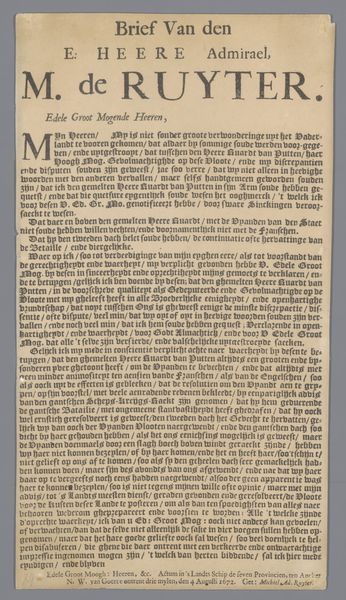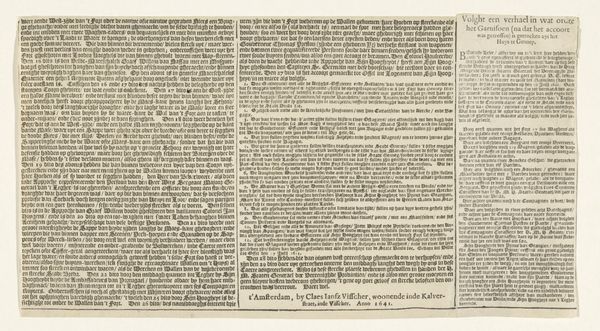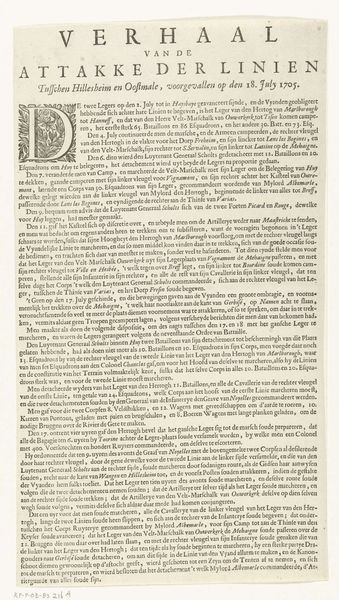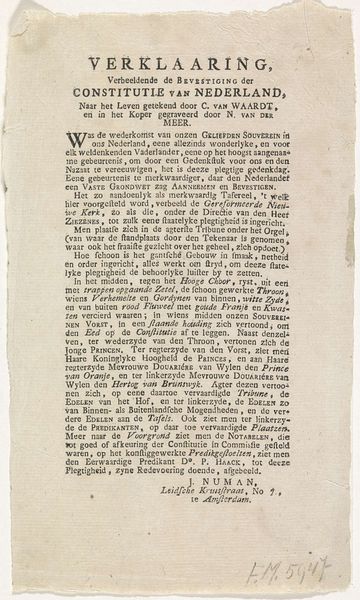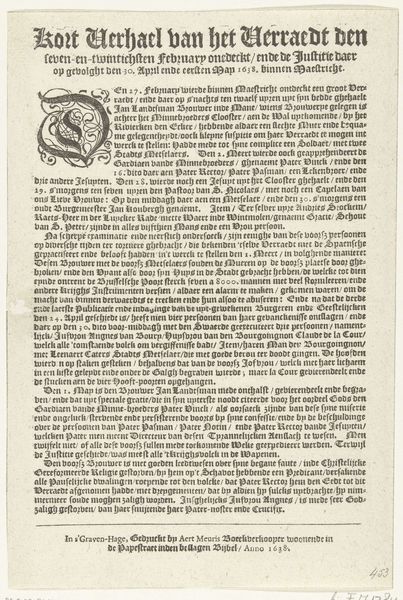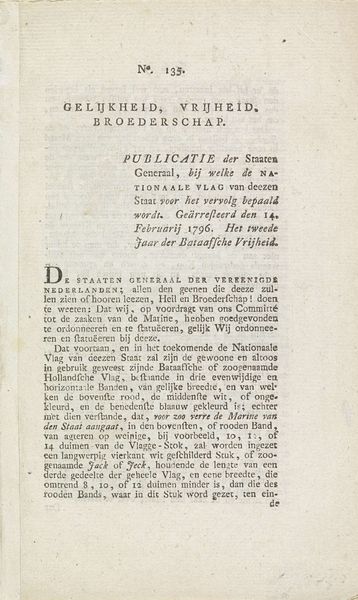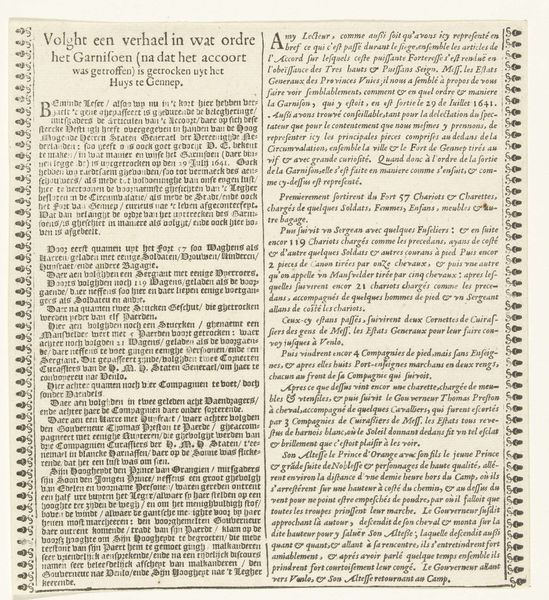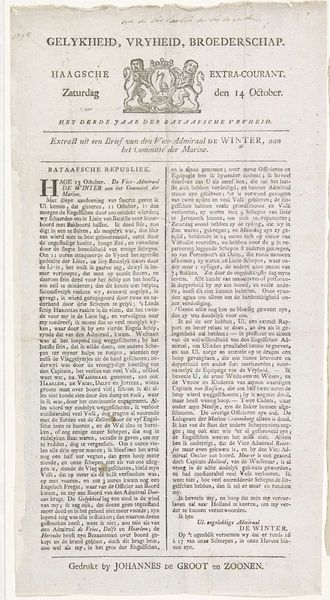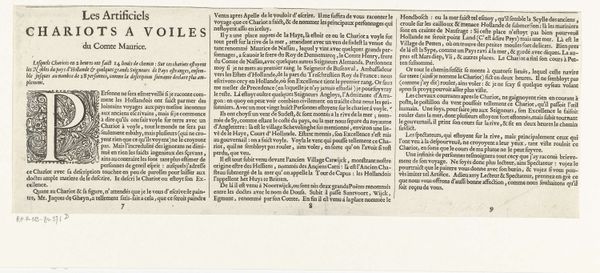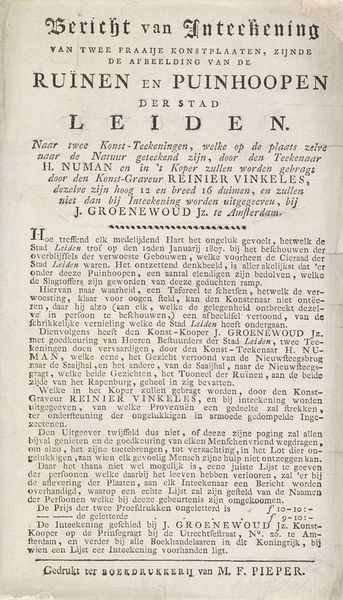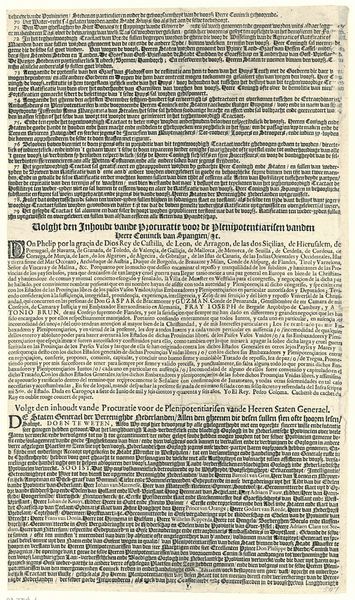
print, engraving
#
baroque
# print
#
engraving
Dimensions: height 280 mm, width 169 mm
Copyright: Rijks Museum: Open Domain
Curator: This is a print dating back to 1645, an "Extract van de aflaat voor de kerk van Scherpenheuvel," created by Hubert Anthoine Velpius. It’s an engraving. Editor: Whew, that's a dense visual field! Overwhelmed, but somehow drawn in—it reminds me of peering through a keyhole into another era. There's a strange allure, despite the tight, blocky design. Curator: Indeed. The visual complexity is quite intentional. It's a baroque print, and its structure serves primarily to communicate information about indulgences related to the church of Scherpenheuvel. Note how the composition emphasizes verticality and textual density over pictorial elements. Editor: I'm picking up a vibe that says, "Authority." All those tightly packed letters feel almost…oppressive? But maybe that was the point, right? Reinforcing religious doctrine. Curator: Precisely. Consider how the lettering itself functions visually, mimicking architectural elements to convey importance, permanence, and unquestionable authority. Editor: It’s kind of wild to think this was mass-produced. The intricacy makes it feel singular. Were these things really effective, in terms of shaping belief or behavior? Curator: Prints such as this played a significant role in disseminating religious teachings. They standardized the messaging, making information uniformly accessible. Editor: So, this wasn't just about selling indulgences but solidifying power structures, too. Kinda makes you wonder about the power of 'likes' and retweets in our age. Different tools, same game, maybe? Curator: An interesting analogy, certainly, concerning the circulation and reinforcement of specific beliefs. But here, there’s also an element of sacredness implied through material culture, not reducible to a mere meme. Editor: True, something about the touch, the ink… Okay, I’m shifting gears here, appreciating this more than I expected. The rigid formality initially put me off, but getting a glimpse into the cultural context—it reframes everything. Curator: It does. This object’s significance transcends mere aesthetics; it's a historical artifact embodying faith, power, and early print culture. Editor: It’s like a little time capsule. A stark reminder of the enduring power of images, and now, even words themselves, carefully designed and spread.
Comments
No comments
Be the first to comment and join the conversation on the ultimate creative platform.
